Calandrinia Plants: Varieties and How to Grow Them
Calandrinia plants are a delightful group of flowers that will brighten up any garden! With their vibrant blooms and easy-going nature, these beauties are a joy to grow. Some varieties are annuals, meaning they complete their life cycle in a single season, while others are perennials that return year after year.
The best part? Calandrinia plants aren’t fussy! Whether you’re a seasoned green thumb or just starting, these low-maintenance flowers are an excellent choice. They don’t demand much attention, making them perfect for busy gardeners or those with limited time.
In this post, we’ll uncover the secrets to cultivating healthy, radiant Calandrinia plants. From choosing the right variety to nailing the ideal growing conditions, we’ve got you covered. Get ready to add a burst of color and charm to your outdoor space with these delightful bloomers!
Contents
- 1 Is Calandrinia a Succulent?
- 2 Types of Calandrinia Succulents
- 2.1 Calandrinia acaulis
- 2.2 Calandrinia affinis
- 2.3 Calandrinia ambigua (Desert Purslane)
- 2.4 Calandrinia brevipedata
- 2.5 Calandrinia breweri (Brewer’s Redmaids)
- 2.6 Calandrinia calyptrata (Pink Purslane)
- 2.7 Calandrinia ciliata (Fringed Redmaids)
- 2.8 Calandrinia compressa (Curnow’s Curse)
- 2.9 Calandrinia eremaea
- 2.10 Calandrinia grandiflora (Rock Purslane)
- 2.11 Calandrinia holtumii
- 2.12 Calandrinia liniflora
- 2.13 Calandrinia litoralis
- 2.14 Calandrinia menziesii (Redmaids)
- 2.15 Calandrinia mirabilis
- 2.16 Calandrinia pickeringii
- 2.17 Calandrinia polyandra
- 2.18 Calandrinia ptychosperma (Creeping Parakeelya)
- 2.19 Calandrinia remota
- 2.20 Calandrinia skottsbergii
- 2.21 Calandrinia spectabilis (Rock Purselane)
- 2.22 Calandrinia strophiolata
- 2.23 Calandrinia uniflora
- 2.24 Calandrinia volubilis
- 3 How to Plant Calandrinia
- 4 Watering Calandrinia
- 5 Propagating Calandrinia
- 6 Do Purslanes Need Fertilizer?
- 7 Pruning Calandrinia
- 8 FAQs
Is Calandrinia a Succulent?
You bet! Calandrinia plants belong to the succulent family. This means they have special tricks up their sleeve to handle scorching heat and lack of water. Their leaves come in a cool blend of blue and green shades, and they’re super thick and fleshy. This allows the leaves to store water like a camel’s hump, helping the plants survive in hot, dry climates without withering away.
So if you live in a toasty region or tend to forget to water your plants sometimes, Calandrinia could be the perfect pick! Their succulent superpowers make them tough cookies that can roll with the punches.
Types of Calandrinia Succulents
Calandrinia acaulis

Calandrinia affinis
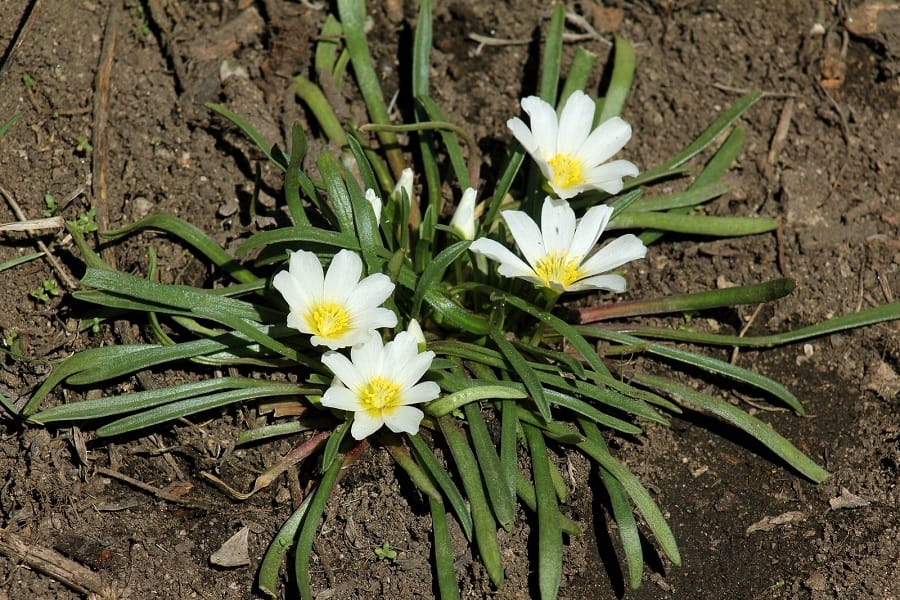
Calandrinia ambigua (Desert Purslane)
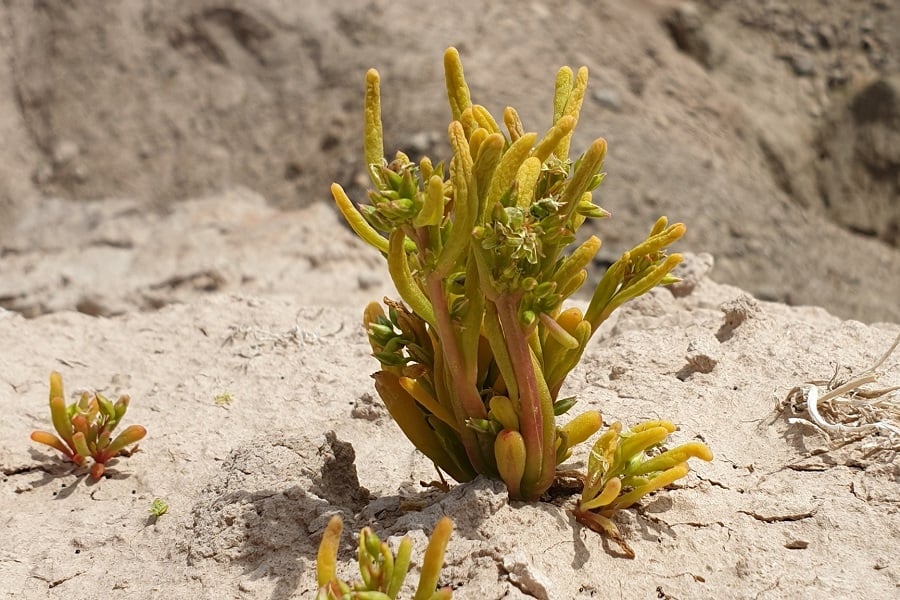
Calandrinia brevipedata
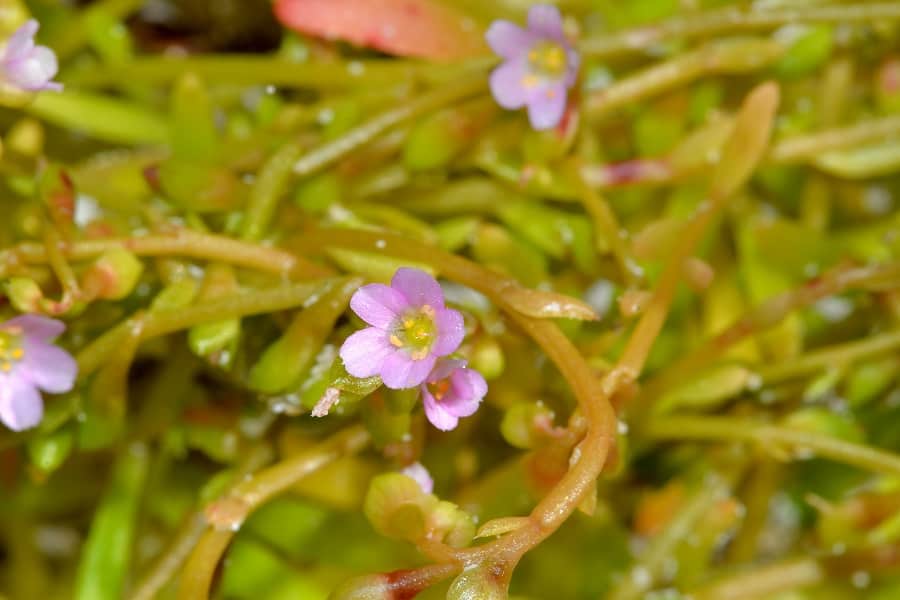
Calandrinia breweri (Brewer’s Redmaids)
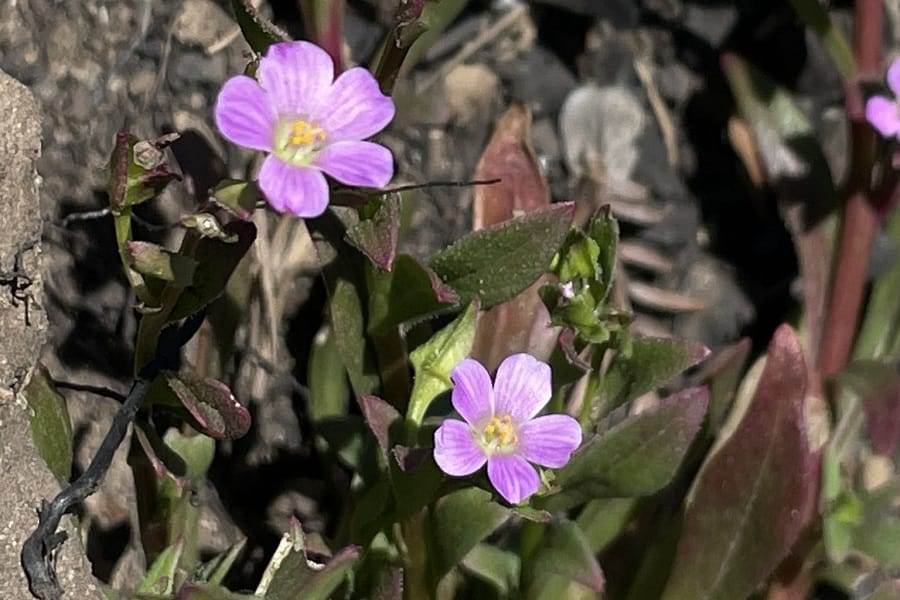
Calandrinia calyptrata (Pink Purslane)
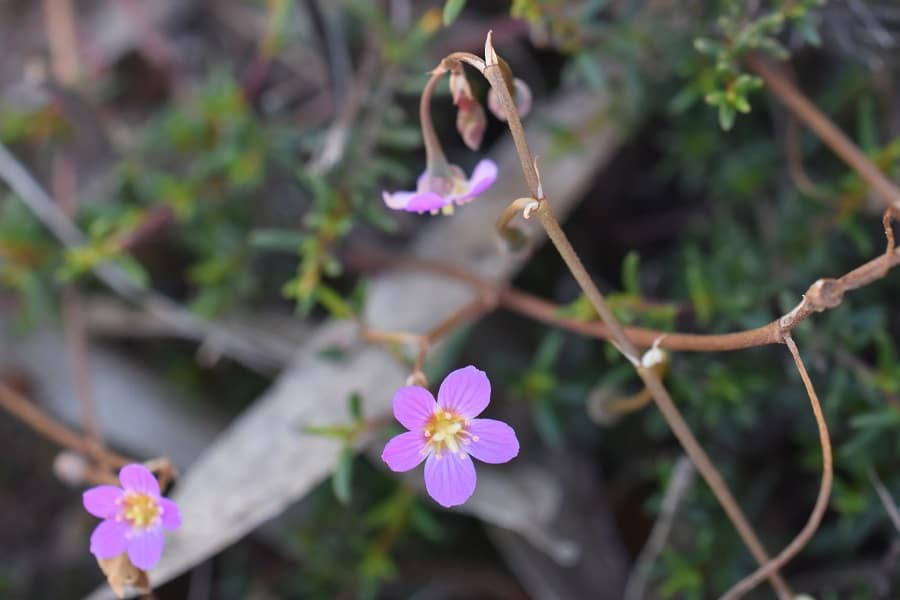
Calandrinia ciliata (Fringed Redmaids)
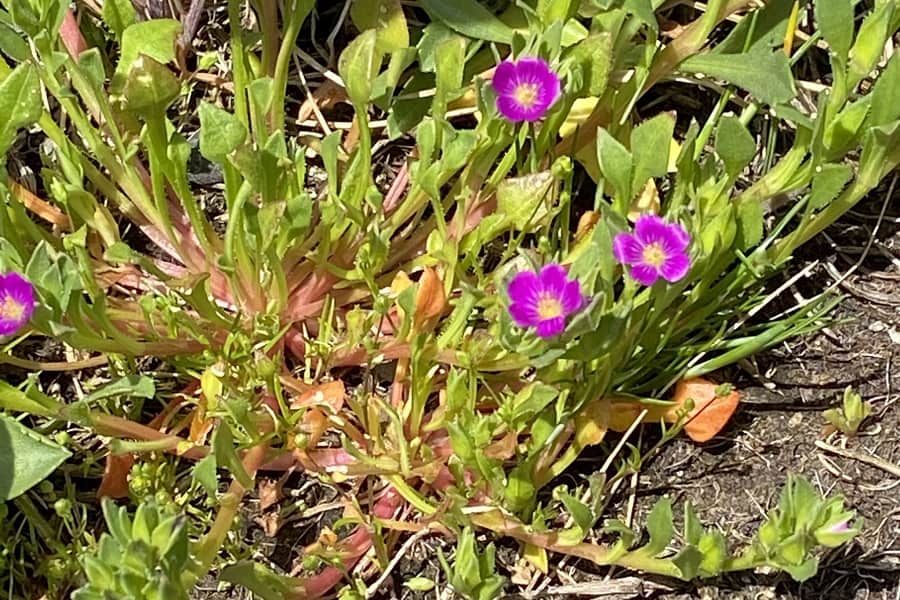
Calandrinia compressa (Curnow’s Curse)
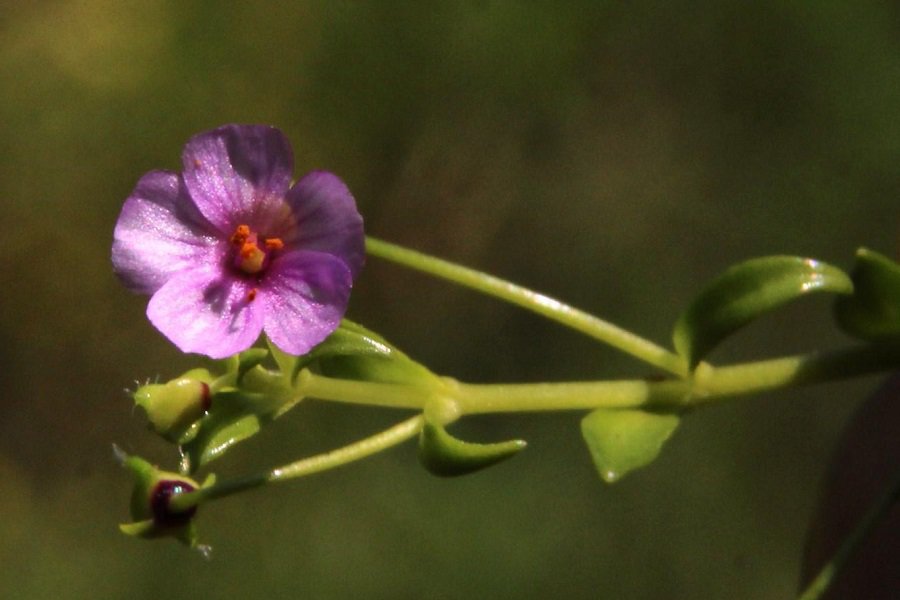
Calandrinia eremaea
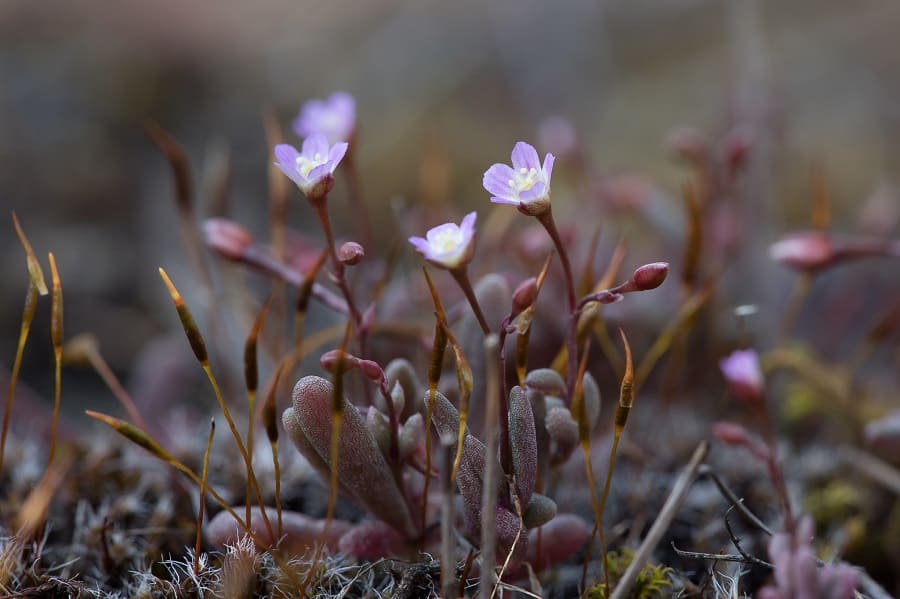
Calandrinia grandiflora (Rock Purslane)
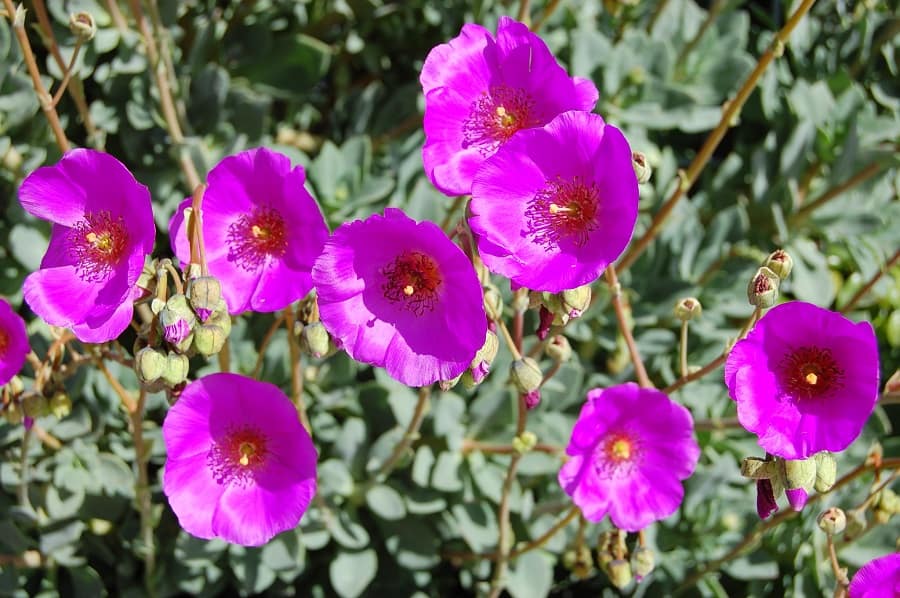
Calandrinia holtumii
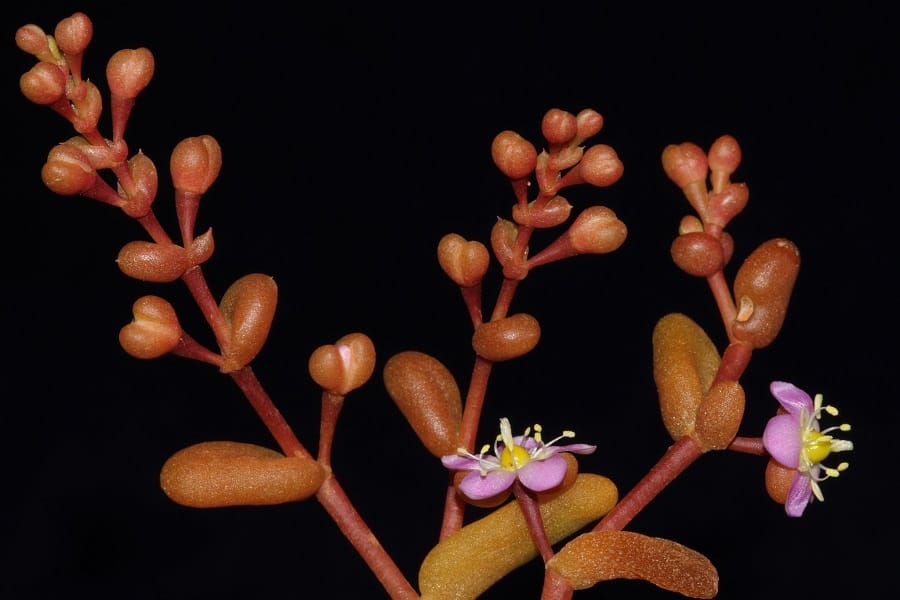
Calandrinia liniflora
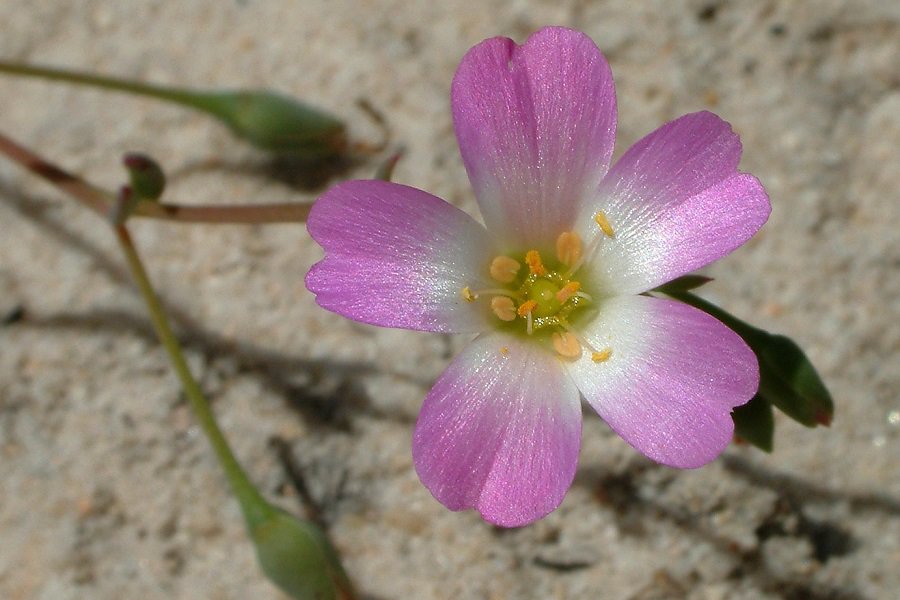
Calandrinia litoralis

Calandrinia menziesii (Redmaids)

Calandrinia mirabilis
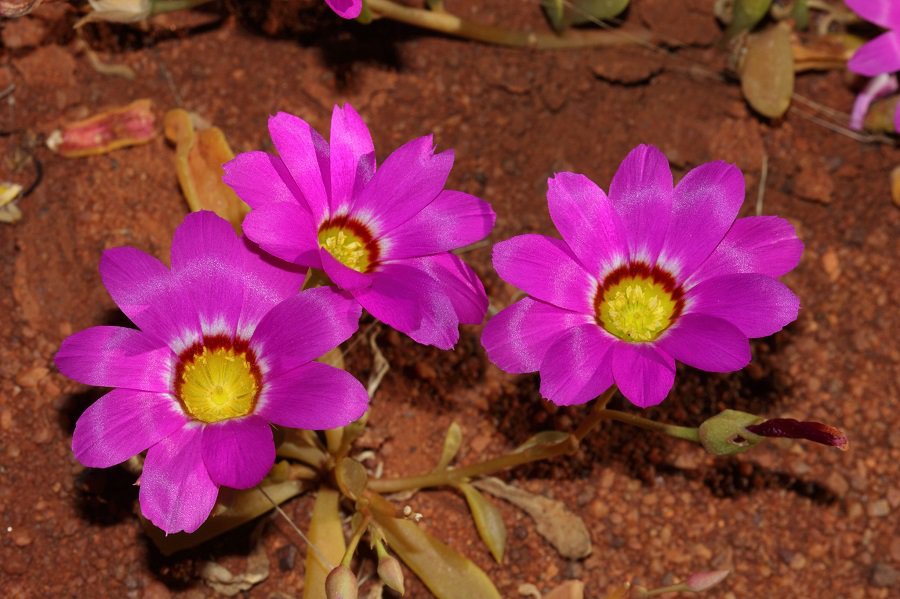
Calandrinia pickeringii
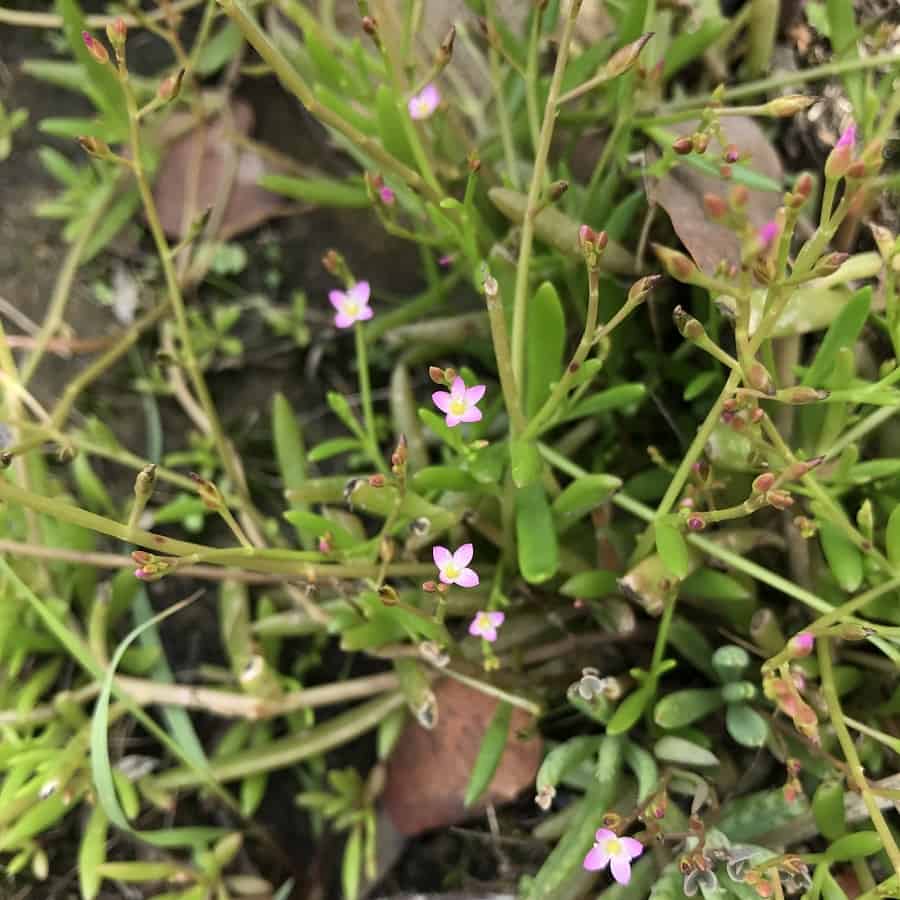
Calandrinia polyandra
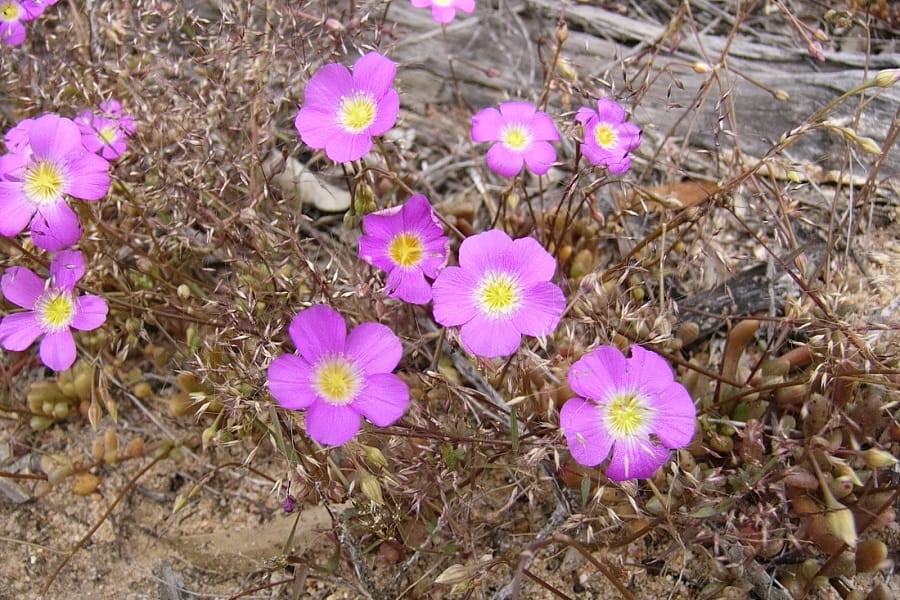
Calandrinia ptychosperma (Creeping Parakeelya)
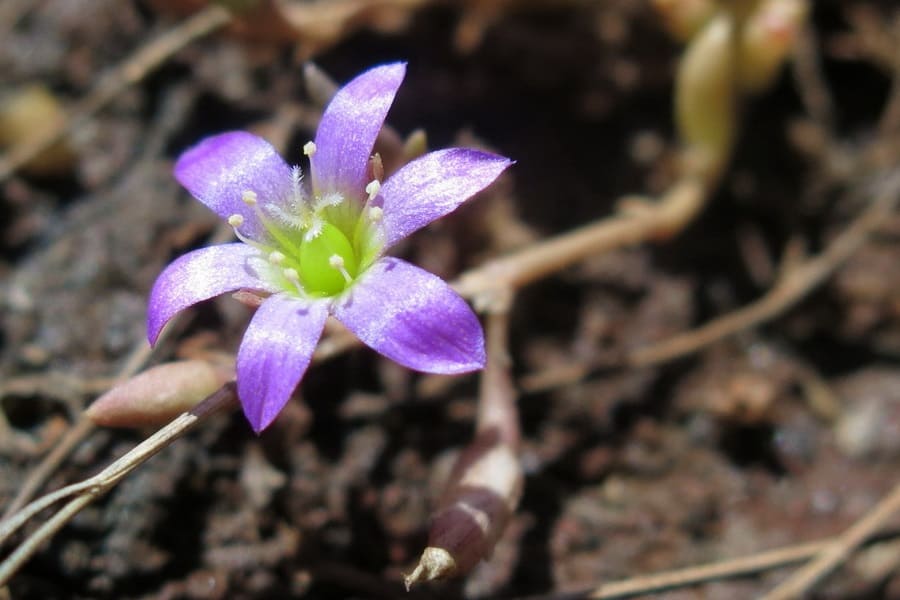
Calandrinia remota
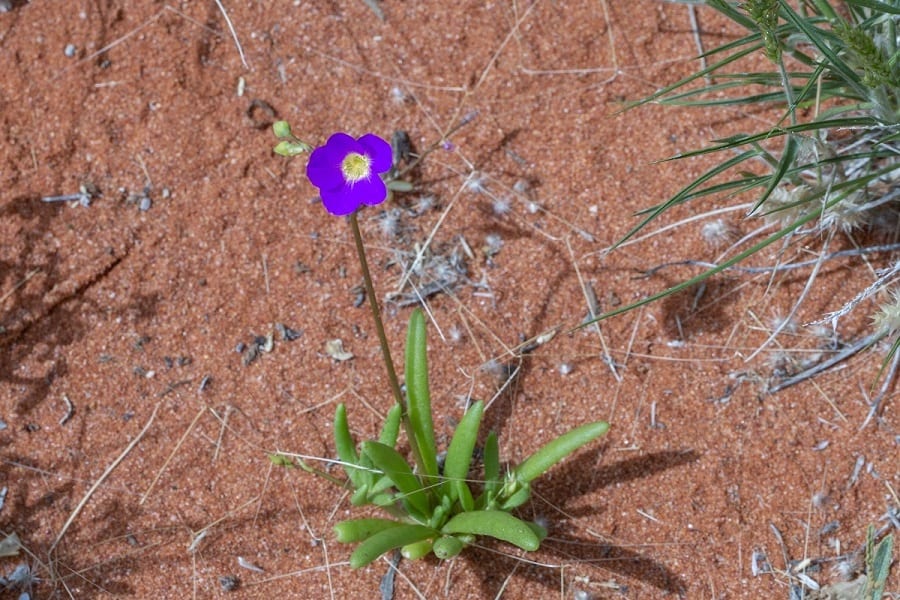
Calandrinia skottsbergii
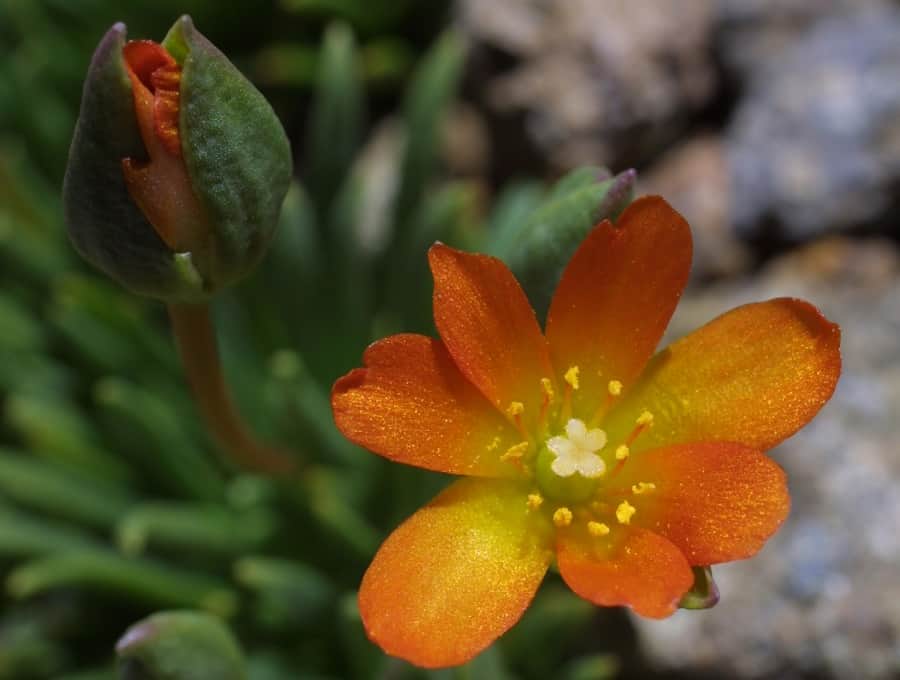
Calandrinia spectabilis (Rock Purselane)
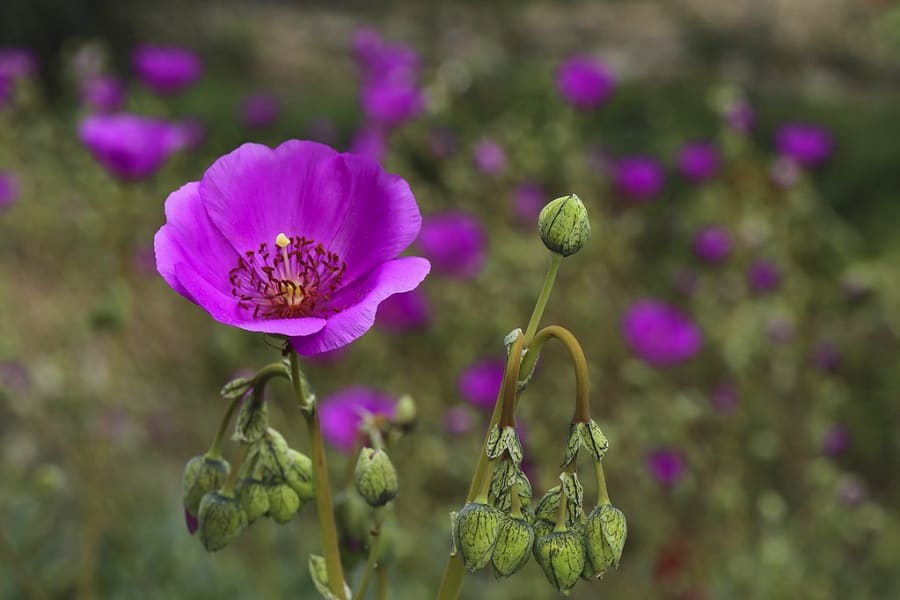
Calandrinia strophiolata
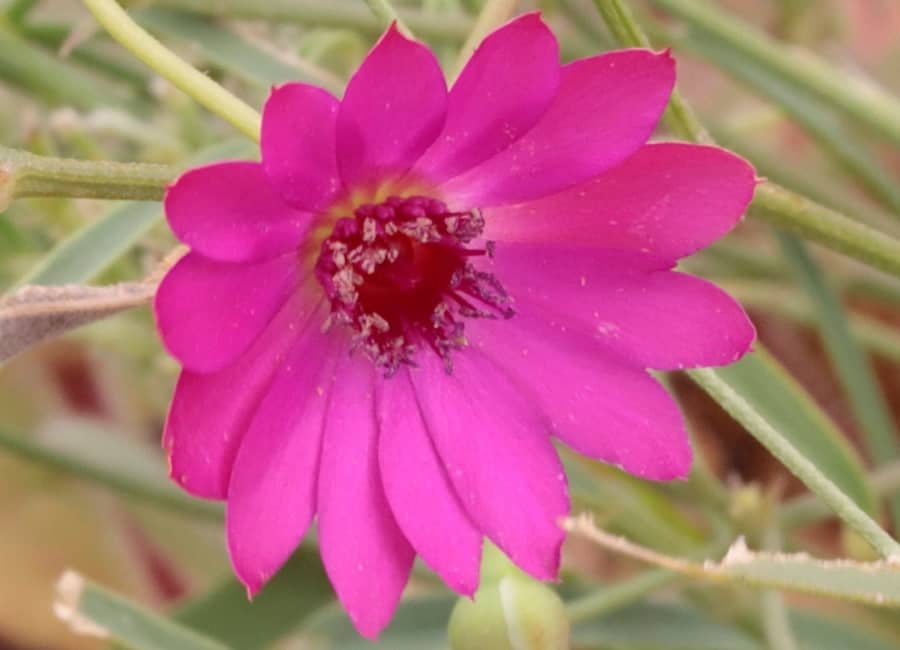
Calandrinia uniflora
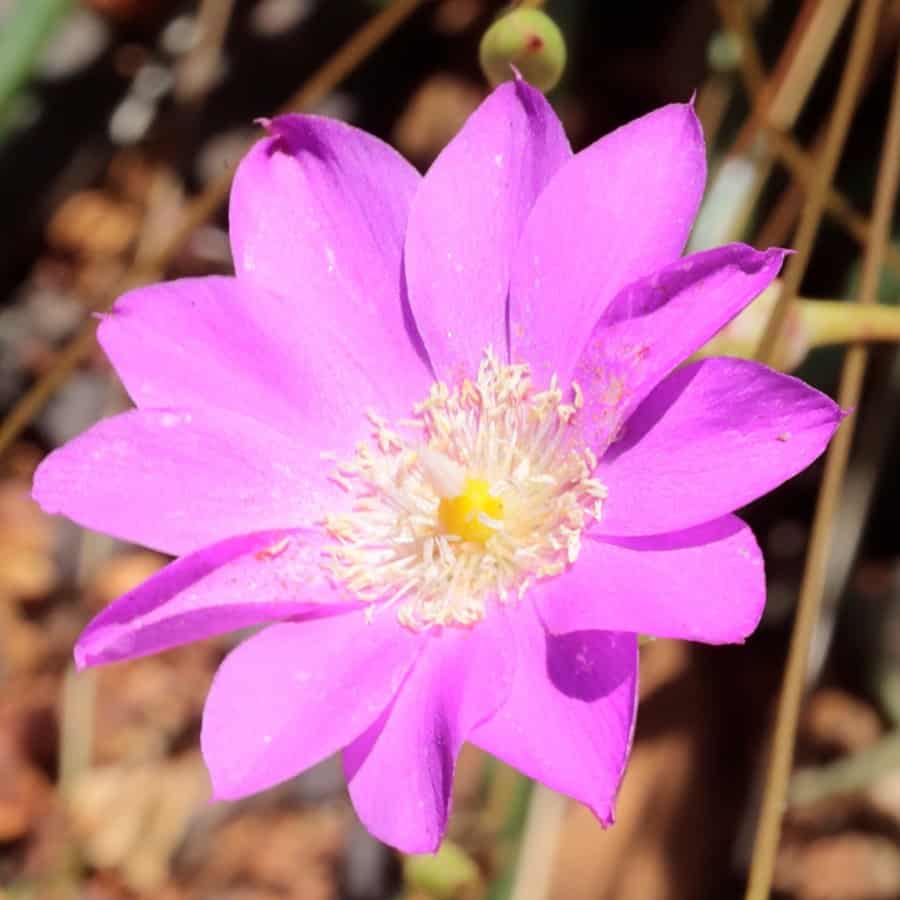
Calandrinia volubilis
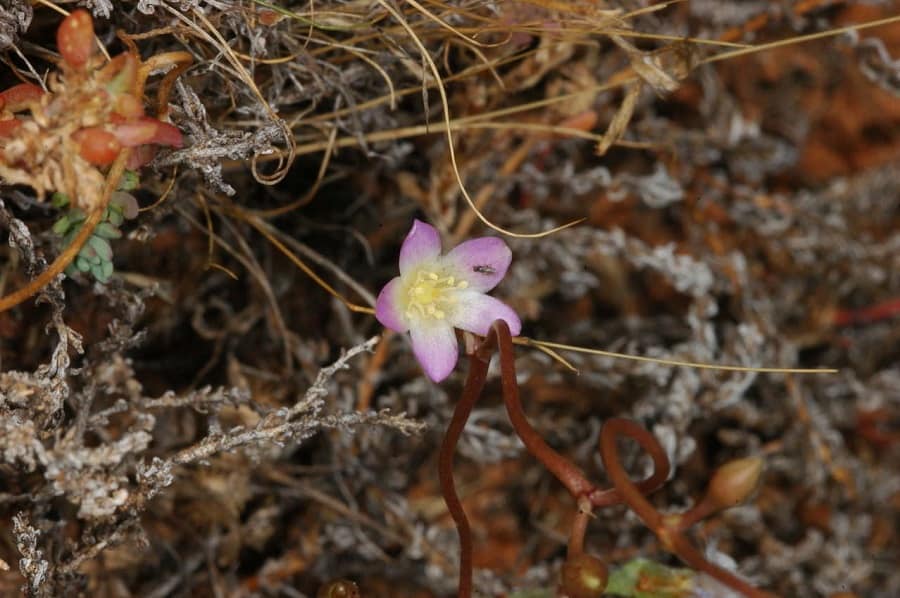
How to Plant Calandrinia
Calandrinia purslanes are hardy plants that can grow in most regions (USDA zones 3-10), while the perennial varieties thrive in warmer areas (zones 8-10). For the soil, mix in some sand or grit with your potting mix. This helps excess water drain away quickly, preventing root rot.
If starting from seed, simply sprinkle the seeds in the soil mix, spacing them out a few inches apart.
The best time to plant is in spring, so the plants can grow during their natural growing season. They love lots of direct sunlight and temperatures between 55-60°F.
Watering Calandrinia
Like most succulents, Calandrinia plants don’t need frequent watering since they’re used to dry climates. A light watering every 10 days or so is plenty, as long as the soil has fully dried out between waterings. Soggy soil can cause rot.
During their winter dormant period, you can cut back even further to just an occasional light watering once or twice.
Propagating Calandrinia
Propagating Calandrinia from seed is easy! Prepare your gritty soil mix, then place the seeds a few inches apart and cover with a thin layer of soil. The seeds will germinate in a few weeks.
For outdoor planting, space the seeds about 8 inches apart when sowing.
You can also propagate Calandrinia from stem cuttings. Snip off a stem segment, allowing a few inches of bare stem below the node. Let the cuttings callus over for a few days before planting them in your soil mix.
Do Purslanes Need Fertilizer?
Nope, purslanes are low-maintenance when it comes to feeding. As long as they have well-draining soil and proper watering, they’ll grow just fine without fertilizer. Their drought-resistant nature helps too!
If you want to give them a nutrient boost, an occasional diluted fertilizer application is okay. But it’s not a must for healthy purslane growth.
Pruning Calandrinia
To take stem cuttings for propagation, use clean shears to snip off segments at an angle just below a node. This allows the cut to callus over while preserving the main plant’s shape.
You can also trim back purslanes to around 6 inches before winter to help them go dormant and conserve energy.
FAQs
Where does rock purslane (Calandrinia spectabilis) grow?
Rock purslane is right at home in hot, dry climates (zones 8-10). If you live somewhere colder, it’s best grown indoors with consistent warm temps.
Is purslane toxic to dogs?
Yes, the calcium oxalate in purslane plants can be toxic to dogs, so keep your pup away from munching on these. If you suspect they ingested some, get them checked by a vet right away.
Why are my purslane’s leaves turning yellow?
Yellowing leaves can signal issues like root rot or fungal infections. Try treating with an fungicide, and double check that you’re not overwatering.
When does rock purslane bloom?
Once rock purslane reaches about 2 feet tall, the pretty pink and purple flowers will start popping up – primarily in spring and summer, but with some blooms year-round. They open in the morning and close at night.
Can I grow purslane indoors?
Absolutely! Purslane makes a great indoor plant as long as it gets plenty of direct sun. Just be sure to repot it when it outgrows its container.
